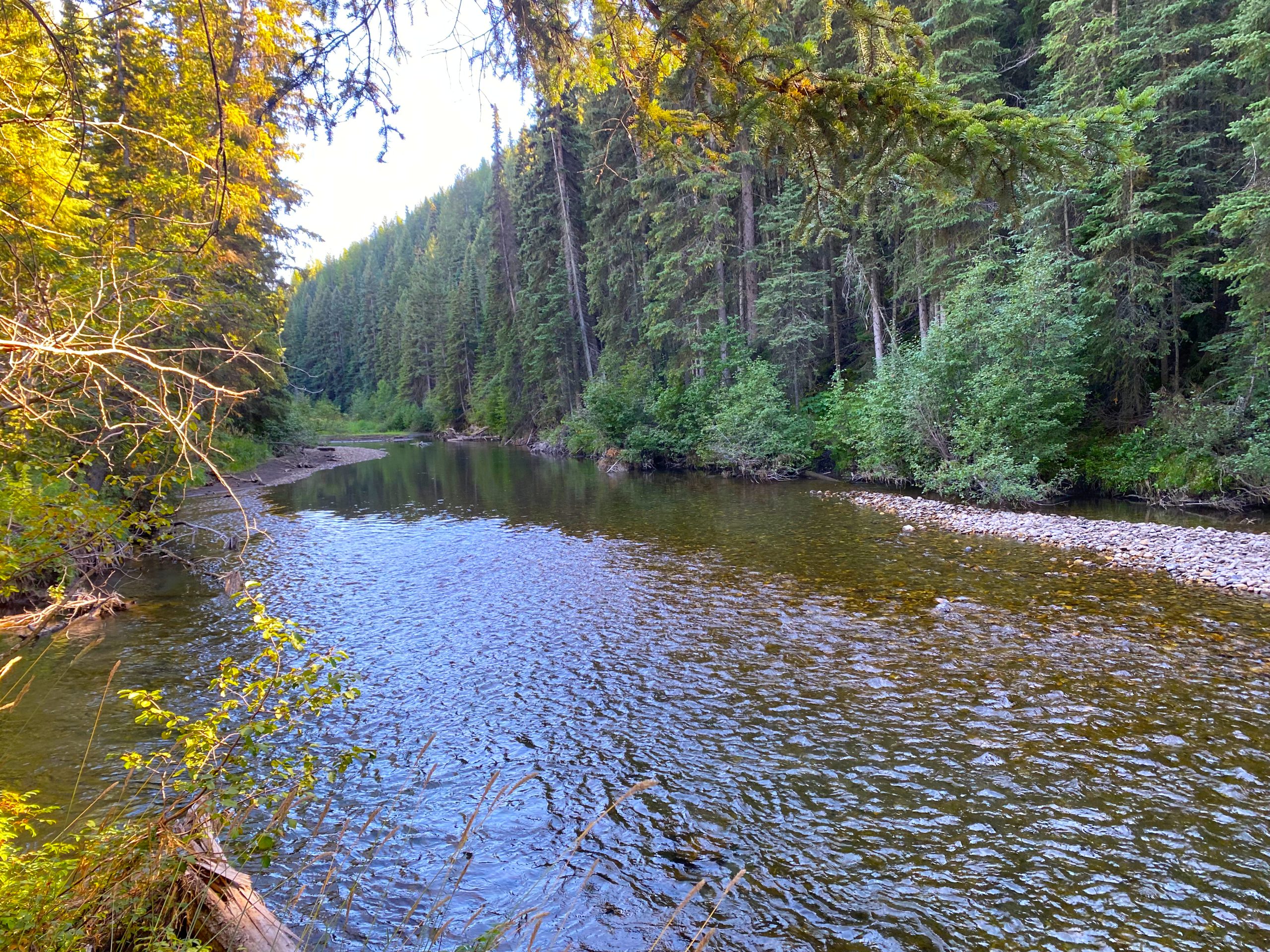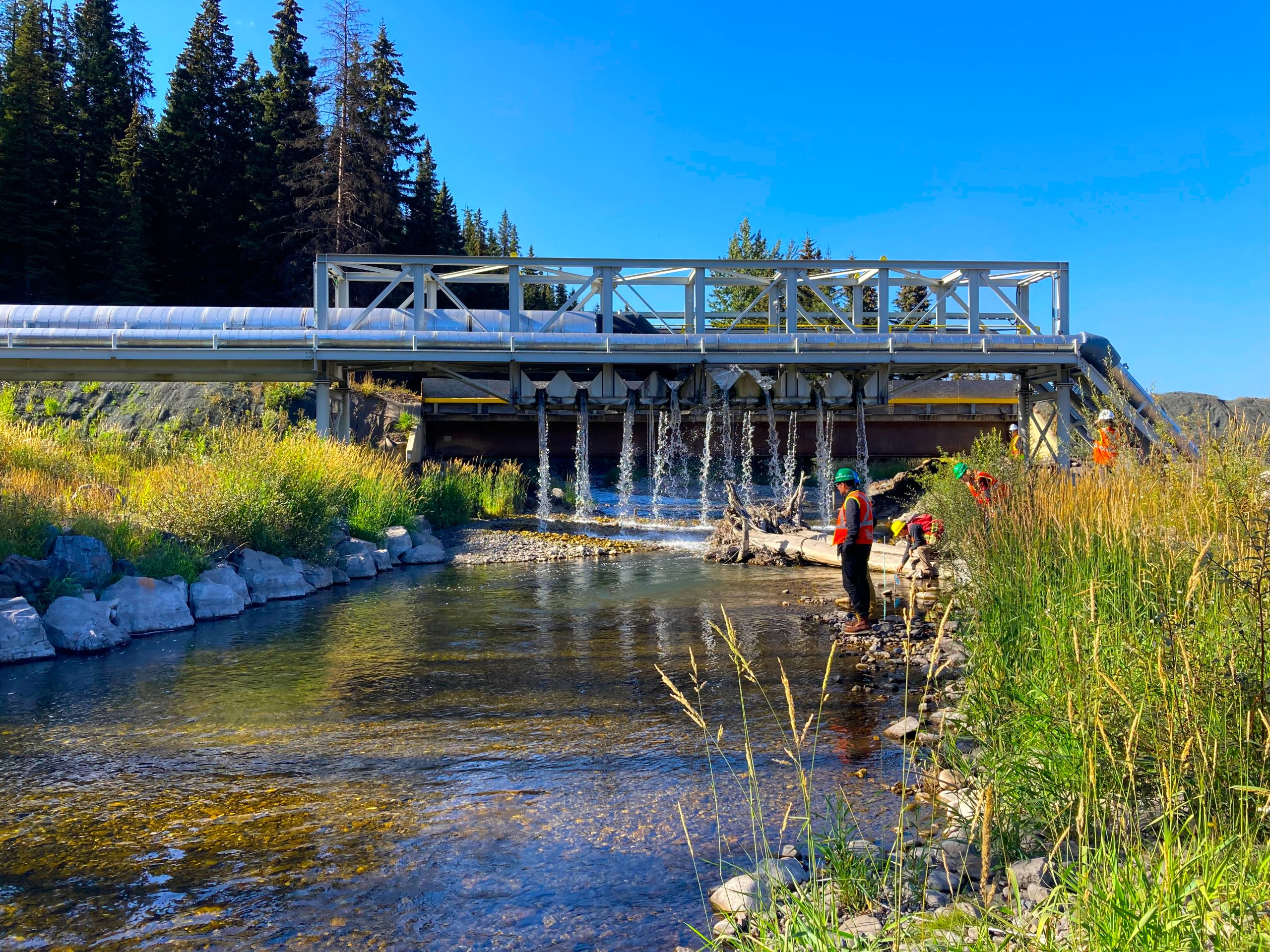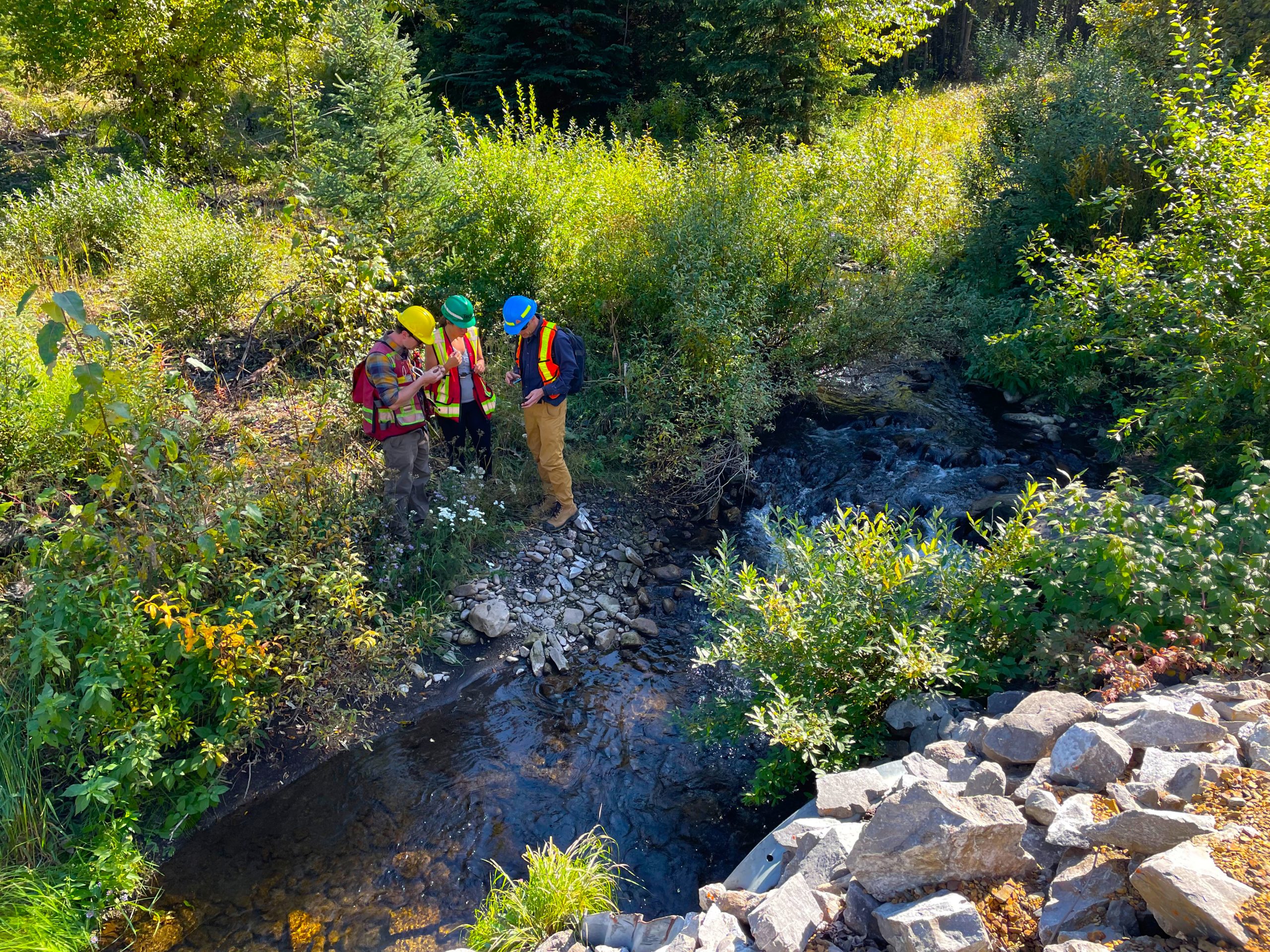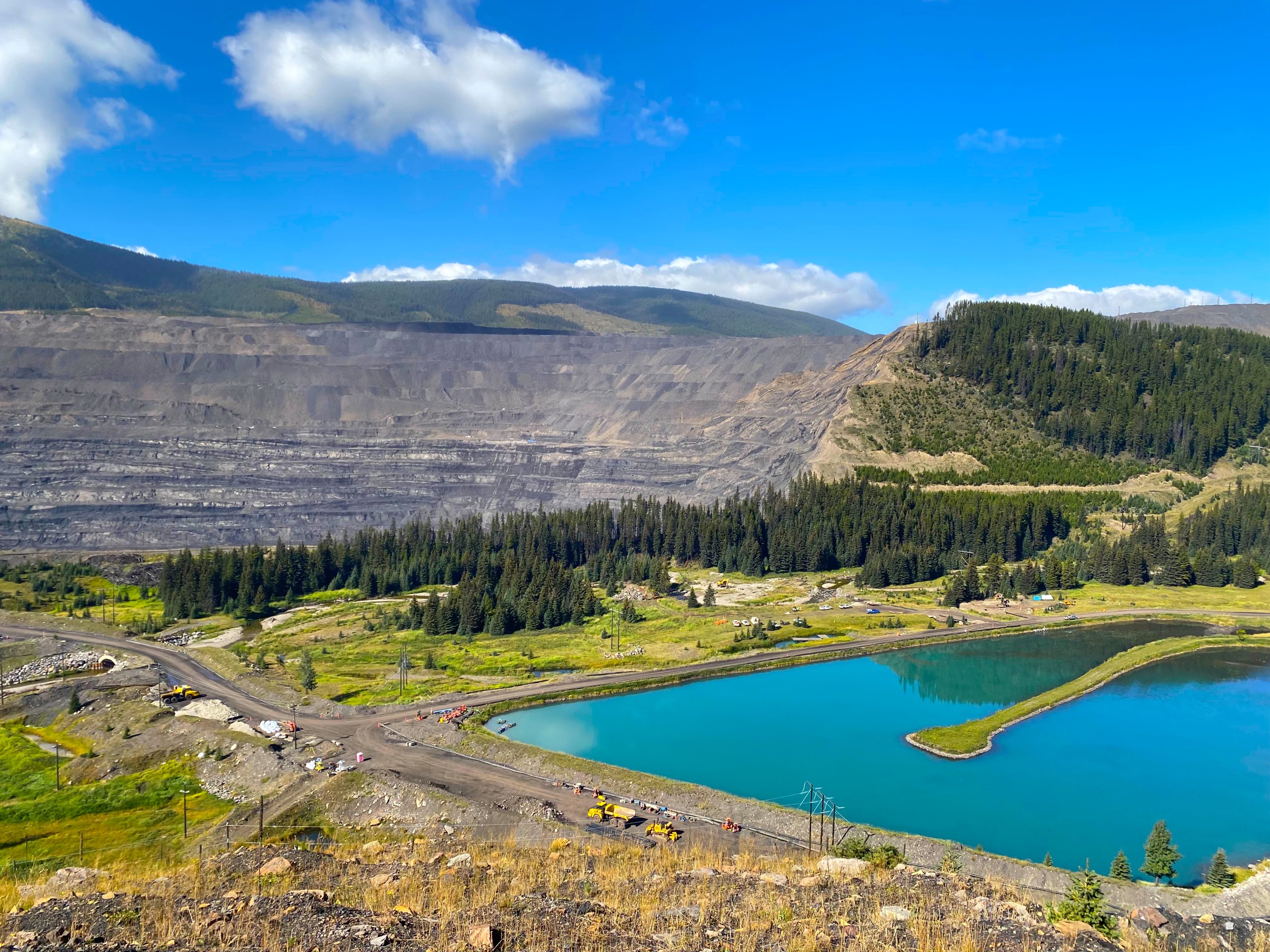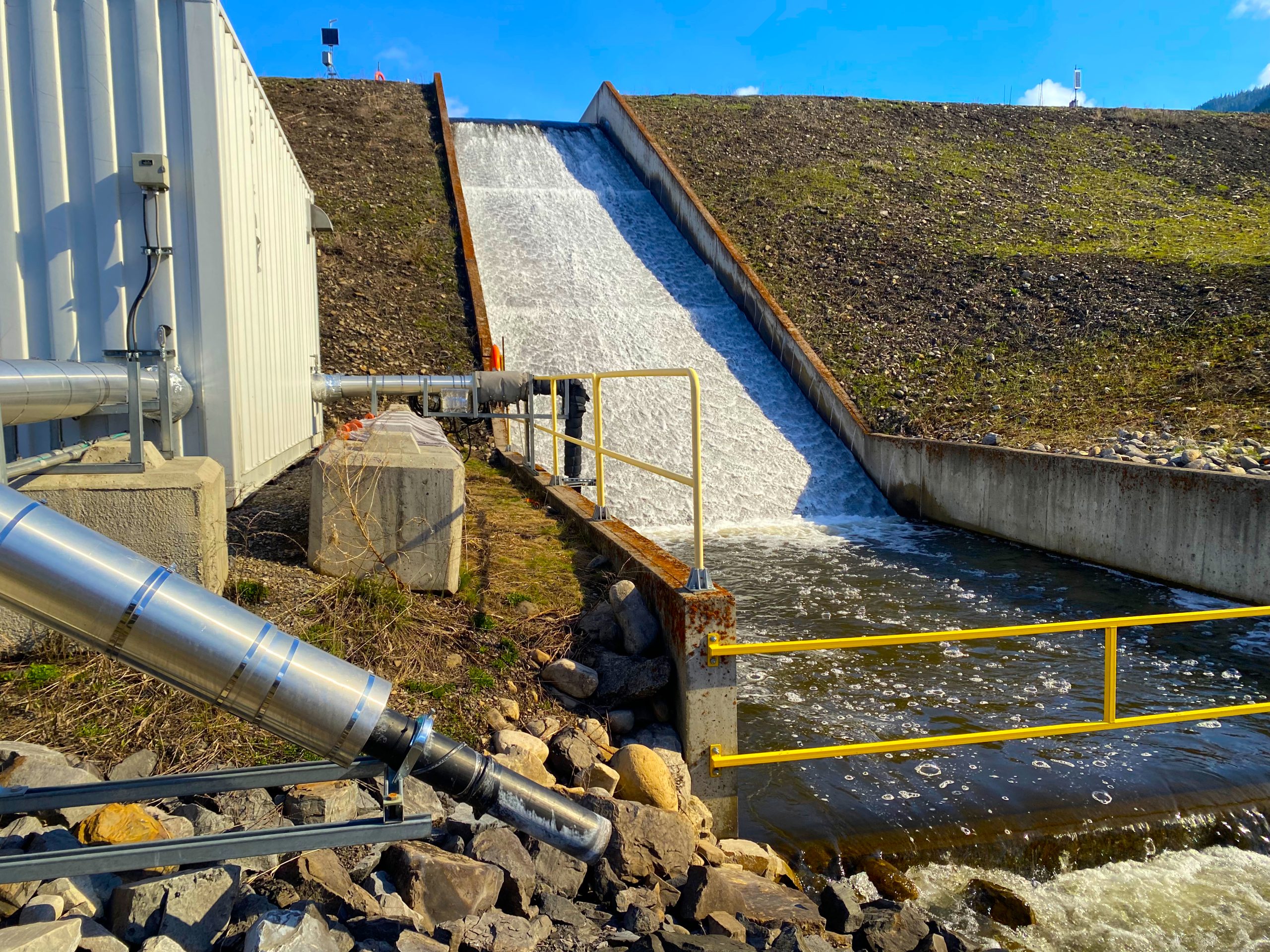On this page
Treatment summary
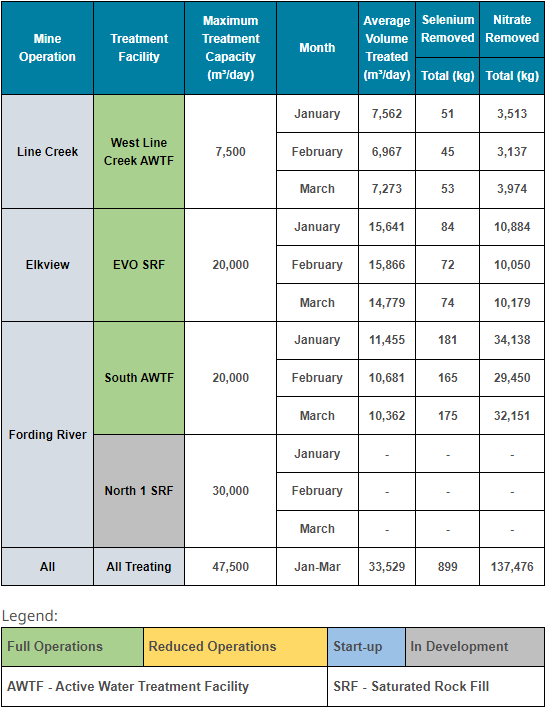
Highlights
Three treatment facilities were fully operational in January – March 2023 (Q1).
- The West Line Creek Active Water Treatment Facility (AWTF) treated at or close to its full design capacity in all three months. The facility operated without any major issues outside of one longer (44 hour) downtime event required to fix the Advanced Oxidation Process influent pipe. The facility operated 97% of the time this quarter.
- The Elkview Operations Saturated Rock Fill (EVO SRF) operated at slightly reduced capacity in Q1 because of a need to recirculate water at some of the wells to manage sulphide generation. The facility also experienced two longer (22 and 19 hour) downtime events in March to manage turbidity in the discharge and to fix a mechanical issue in the Erickson Creek discharge pipe. The facility operated over 97% of the time this quarter which is still quite high.
- The Fording River Operations South (FRO-S) AWTF operated below full capacity because of reduced volumes of water in the influent tributaries. The facility only experienced two moderate downtime events (14 and 9 hours) in response to ozone and hydrogen peroxide alarms in the internal treatment system. The FRO-S AWTF set new Elk Valley records for selenium and nitrate removal and operated over 97% of the time this quarter.
Fording River Operations North 1 Saturated Rock Fill (FRO-N1 SRF) treatment facility is in development but is almost ready to enter its start-up phase.
- The first phase of this facility (9,500 m3/day capacity) continues to prepare for start-up by circulating water within the facility. Permit application review for the second phase (30,000 m3/day total capacity, including Phase 1) is nearing completion. Phase 2 of the facility is in pre-startup and is expected to transition to the start-up phase next quarter.
- This facility is not yet discharging treated water to the environment.
Overall, Elk Valley treatment facilities operated at approximately 70% of total potential capacity and were running more than 97% of the time (i.e., less than 3% downtime) this quarter. The volume of water that was treated at FRO-S AWTF was limited due to winter low flow conditions, not facility operation issues. Facilities removed 899 kg of selenium and 137,476 kg of nitrate. These are the largest quarterly removals of selenium and nitrate to date in the Elk Valley.
Treatment progress
Amount of selenium removed and remaining in the Elk River
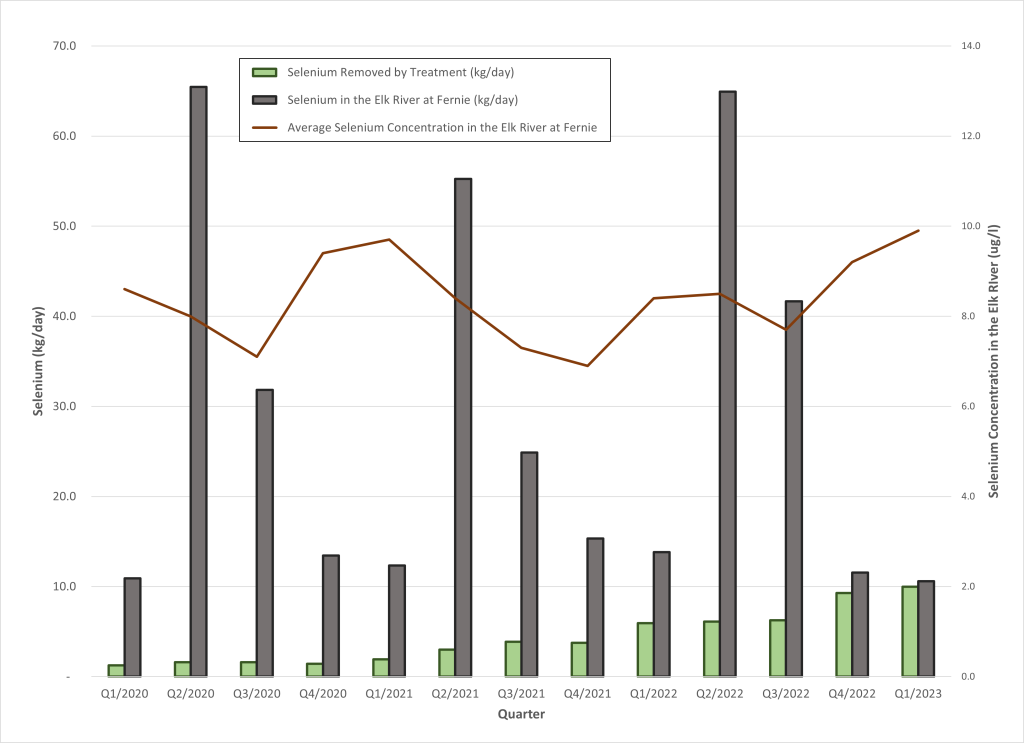
Amount of nitrate removed and remaining in the Elk River
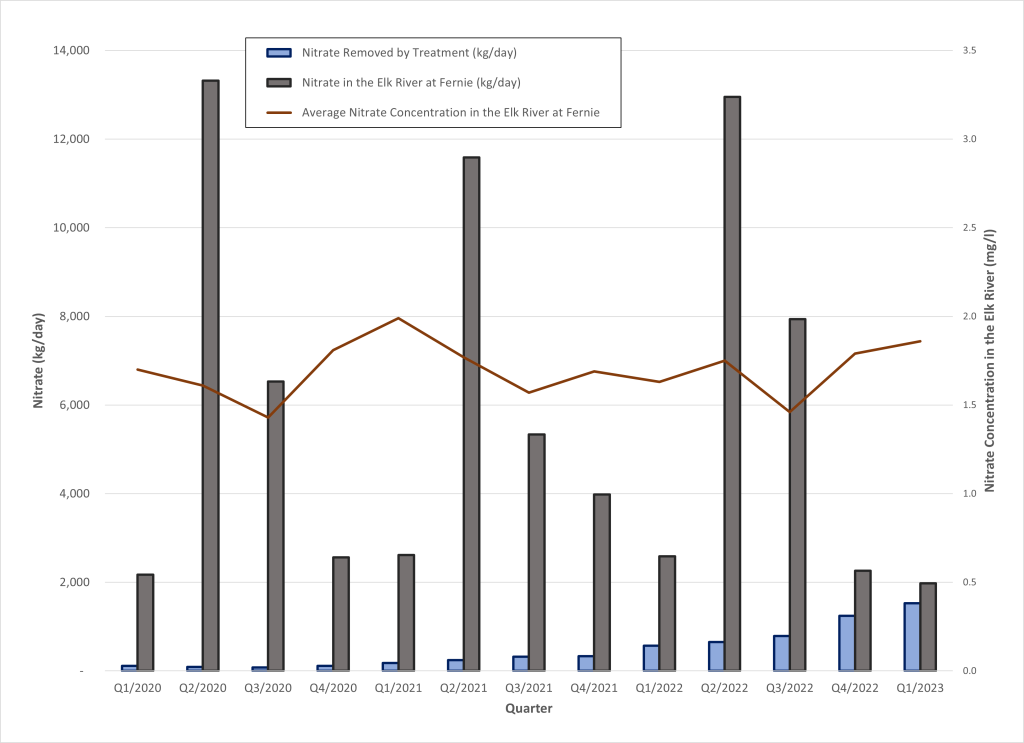
The graphs above show the total estimated amounts of selenium and nitrate that were in the Elk River at Fernie as grey bars, the average measured concentration of these substances in the river as red lines, and the amount of selenium (green bars) and nitrate (blue bars) removed by treatment, each quarter.
The substance amounts removed by treatment continued to increase during the first quarter of 2023.
- Selenium removal increased by 8% from the previous quarter and was approximately 70% greater than during the first quarter of 2022.
- Nitrate removal increased by 23% from the previous quarter and was approximately 165% greater than during the first quarter of 2022.
Consistent with the increase in treatment facility operations, the amount removed compared to the amount measured in the Elk River also increased. This can be visualized by comparing the relative size of the colored bars and the grey bars in each quarter. This increase is largely a result of the FRO-S AWTF now removing significant quantities of selenium and nitrate from the watershed.
Despite lower total amounts of selenium and nitrate in the Elk River at Fernie in Q1 2023 compared to Q1 2022, the concentrations of these substances were higher in 2023. This is likely because of the lower flow rates in the Elk River in Q1 2023, which decreased the dilution of these substances.
The substance amounts in the Elk River at Fernie are calculated from water quality data collected by EVR and flow data collected by the Water Survey of Canada. The amount of each substance varies with the amount of flow in the river. In general, the higher the flow the greater the amount, and vice-versa.


